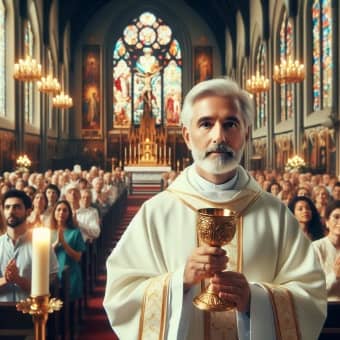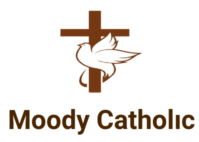The Evolution Of The Catholic Mass
The Catholic Mass, a cornerstone of faith and worship, has evolved significantly throughout the centuries. From its early roots in the Apostolic Age to its current form, the Mass has undergone various transformations, reflecting changes in theology, culture, and liturgical practices. Let’s take a journey through the history and evolution of the Catholic Mass.
This blog post contains affiliate links. When you click on a link on this page and make a purchase I may earn a small commission, at no additional cost to you. Thank you for your support.
The Early Church
Roots In The Apostolic Age
In the earliest days of Christianity, followers gathered in private homes to celebrate the Eucharist. These gatherings were simple and intimate, focused on the reading of Scripture and the breaking of bread as Jesus had done at the Last Supper. The primary language used was likely Aramaic or Greek, as these were common tongues of the time.
The Didache, a document dating back to the first century, gives us some insights into these early celebrations, showing a structure that included prayers of thanksgiving and the communal sharing of bread and wine. The sense of community and the presence of the Holy Spirit were central to these gatherings.
The Patristic Period
Formalization And Uniformity
As Christianity spread throughout the Roman Empire, the need for a more uniform and structured liturgy became evident. By the 4th century, the Edict of Milan had legalized Christianity, allowing for public worship and the construction of church buildings.
During this period, the Mass began to incorporate more formal elements, such as standardized prayers, readings from the Old and New Testaments, and the inclusion of hymns. The Latin language gradually became the dominant liturgical language due to its prevalence in the Western Roman Empire.
St. Ambrose of Milan and St. Augustine of Hippo were influential figures in formalizing the liturgy. The Mass started to include distinct parts: the Liturgy of the Word, focused on reading and preaching, and the Liturgy of the Eucharist, centered on the consecration and reception of the Eucharist.
The Middle Ages
Development And Splendor
The Middle Ages saw significant developments in the structure and ceremonial aspects of the Mass. The influence of monastic communities, such as the Benedictines, contributed to the standardization and embellishment of the liturgy.
The Ordo Romanus, a liturgical manual from the 8th century, provided a more detailed and organized structure for the Mass. This period also saw the introduction of the Roman Canon, the central Eucharistic prayer still in use today.
The use of elaborate vestments, incense, and Gregorian chant added to the splendor and solemnity of the Mass. The architecture of churches, with their grand altars and intricate mosaics, reflected the growing importance of the Eucharistic celebration.

The Council Of Trent
Standardization And Reform
The 16th century brought about the Protestant Reformation, challenging many aspects of Catholic doctrine and practice, including the Mass. In response, the Catholic Church convened the Council of Trent (1545-1563) to address these issues and reaffirm Catholic teachings.
One significant outcome of the Council was the standardization of the Mass across the Western Church. The Roman Missal of 1570, promulgated by Pope Pius V, established a uniform liturgy known as the Tridentine Mass. This form of the Mass remained largely unchanged for the next four centuries, characterized by its use of Latin, prescribed prayers, and specific rubrics.
The Second Vatican Council
Modernization And Engagement
The most profound changes to the Mass occurred in the 20th century, with the Second Vatican Council (1962-1965). Recognizing the need for greater engagement and participation from the laity, the Council introduced sweeping reforms to the liturgy.
The Constitution on the Sacred Liturgy (Sacrosanctum Concilium) emphasized the importance of active participation and the use of the vernacular language in the Mass. This led to the translation of the liturgy into local languages, making it more accessible to the faithful.
The revised Roman Missal of 1970, promulgated by Pope Paul VI, reflected these changes. The altar was turned to face the congregation, fostering a sense of community. New Eucharistic Prayers were introduced, and the Liturgy of the Word was expanded to include a broader selection of Scripture readings.
The Contemporary Mass
Unity And Diversity
Today, the Catholic Mass is celebrated in diverse forms worldwide, reflecting the universality of the Church while maintaining core elements of the liturgy. The use of local languages, cultural adaptations, and contemporary music enhances the worship experience and allows for meaningful participation.
While the Ordinary Form, stemming from the reforms of Vatican II, is the most common, the Extraordinary Form, or Tridentine Mass, is also celebrated, preserving the liturgical heritage of the pre-Vatican II era.
Throughout its evolution, the Catholic Mass has remained a vital expression of faith, adapting to changing times while preserving its essence. As we continue to gather in worship, we are part of a rich tradition that spans millennia, united by the mystery and grace of the Eucharist.
Looking for unique Catholic gifts? Check out our gift guide!
Thank you for visiting my Moody Catholic blog. If you enjoyed reading this article please tell others by clicking on the share button in the lower right hand corner, right underneath the scroll to top arrow.
